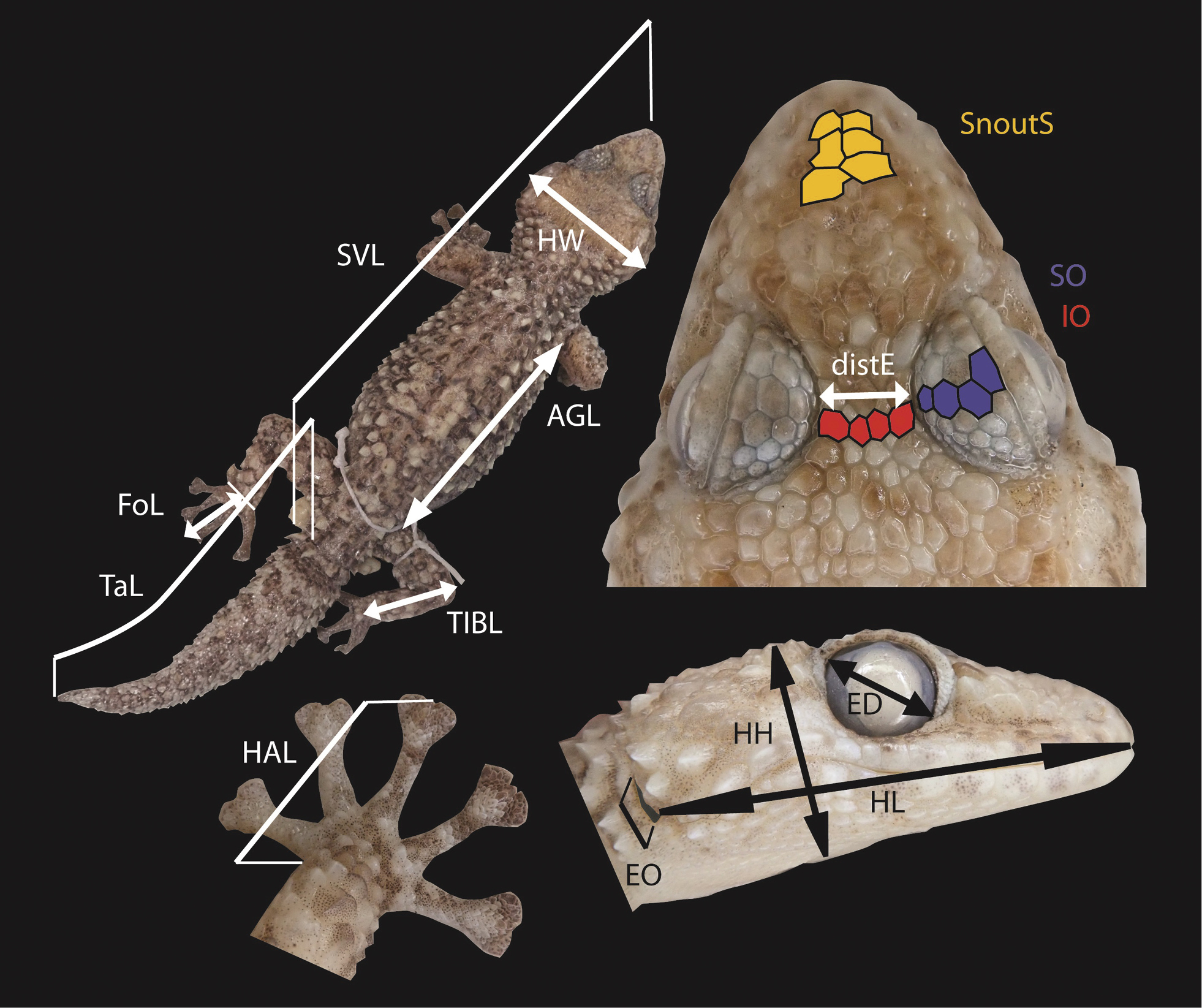
|
||
|
Illustration of the morphological characters used in this study. Quantitative characters: SVL = snout–vent length; TaL = tail length; HL = maximum head length from the anterior margin of the ear opening to the tip of the snout; HW = maximum head width; HH = maximum head height behind the eyes; distE = minimum distance between and the bony edges of the eyeballs in dorsal view; AGL = axilla-groin distance; ED = maximum eye diameter; EO = maximal ear opening; TIBL = distance between the ankle and the knee (tibia length, knee flexed at 90°, left side). Qualitative characters: IO = minimum number of interocular scales separating the eyes (above the center of the eyes); SO = number of granular scales across the upper eyelid (transversally) ; SnoutS = arrangement of the mediodorsal scale rows of the snout tip: mostly forming two transverse rows of granules in contact (c), separated by a third median rows (s) or intermediate pattern (i). Pictures of P. bastardi taken by AM. |